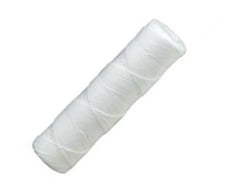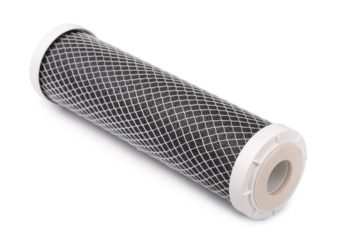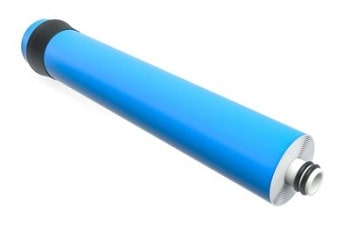You love that your neighborhood has a safe and reliable water supply. You always have all the water you need, and your municipal water supplier treats the water with chlorine, so you know that it is free of bacteria or other unwanted contaminants, but it still smells like chlorine. Do you want your family drinking chlorine?
Does A Reverse Osmosis Remove Chlorine? The process of reverse osmosis will remove chlorine, but a reverse osmosis membrane will become ineffective from long term exposure to chlorine. Most reverse osmosis drinking water systems have an activated carbon pre-filter to remove chlorine from your water before it can damage the membrane.
Adding chlorine to water is an easy and economical way to disinfect the water in order to make it safe for bathing and drinking, but who wants to smell or taste chlorine in their drinking water? A reverse osmosis system can remove chlorine, and here’s how.
How can a reverse osmosis system remove chlorine, when the process of reverse osmosis does not remove chlorine.
You have to remember that a home reverse osmosis drinking water system is not just a simple filter, but it is a series of different stages which filter and treat the water.
The first stage is usually for sediment removal.

A reverse osmosis drinking water system uses a delicate, semi-permeable membrane that must be protected from debris that could damage it, or clog it. This is why it is so important to have a sediment filter as the first stage of the system.
It will filter out any debris or particles that could cause problems inside of the rest of the system.
The second stage is usually a special carbon filter for chlorine removal.

This is where the reverse osmosis system removes chlorine to protect the semi-permeable membrane that filters out the dissolved solids from your water.
It is normally a Granular Activated Carbon (GAC) filter. This carbon-based filter traps the chlorine in the pores of the carbon, protecting the rest of the system. (Source)
If you have a whole house filter, you can remove chlorine before it gets to your reverse osmosis system.
If you have municipal water, sediment is not usually a problem, but you may benefit from installing an in-line whole house filter that you could use a large Granular Activated Carbon (GAC) filter.
This would not only protect your reverse osmosis drinking water from the incoming chlorine, but it would also protect your entire home.
Chlorine can cause spots and etching on water fixtures, and the odor can be very annoying.
A reverse osmosis membrane must be protected from chlorine.

A reverse osmosis membrane is a fine semi-permeable membrane that can be damaged by regular exposure to chlorine.
Chlorine can cause the membrane to become soft which will cause the mesh to widen, and therefore not filter out dissolved solids.
Even one strong dose of chlorine can cause the membrane to lose its effectiveness.
You may have to replace your reverse osmosis systems carbon pre-filter more often than the other filters.
If you have a high level of chlorine in your incoming water, your reverse osmosis carbon filter may need to be replaced often. The Granular Activated Carbon (GAC) in the filter will become ineffective quicker when the strength of the chlorine is higher.
Don’t use cheap substitute carbon filters.
To properly remove chlorine in a reverse osmosis drinking water system, a Granular Activated Carbon (GAC) filter should always be used. Other filters that say carbon on them might be only carbon embedded filters.
Carbon embedded filters have a small amount of carbon in them, primarily for the removal of minor odor in the water, not for chlorine removal.
Using any carbon filter in your reverse osmosis system other than a Granular Activated Carbon (GAC) filter will put your reverse osmosis membrane at risk of damage, and need of replacement.
Don’t just change the carbon filter.
Although you may need to change the Granular Activated Carbon (GAC) filter on your reverse osmosis system more often than the other filters in order to protect the membrane from high levels of chlorine, the other filters must be changed as recommended by the manufacturer.
Some examples of reverse osmosis drinking water systems that will remove chlorine.
There are many reverse osmosis drinking water systems available that come with a Granular Activated Carbon (GAC) filter for chlorine removal.
Even very basic reverse osmosis systems often come with a Granular Activated Carbon (GAC) filter standard.
If you take a look at my recommended reverse osmosis drinking water systems, you will very likely find a perfect sized system for you that will also remove chlorine from your water.

